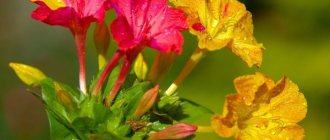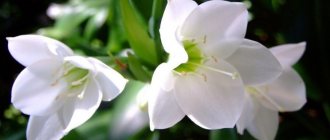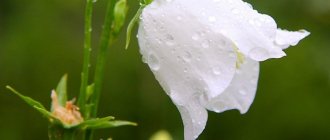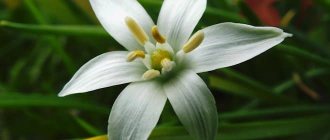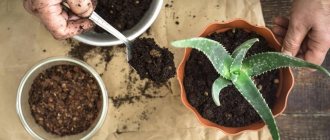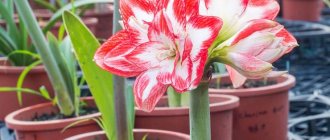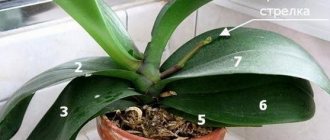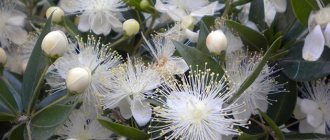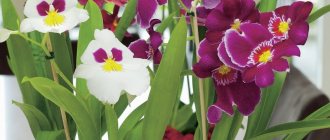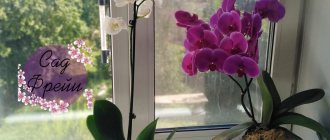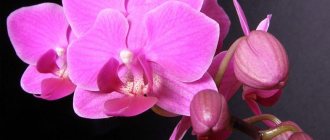It’s hard to come up with a second country from which plants are most often brought as souvenirs, and not something other than leisurely Vietnam. This country is considered the largest exporter of various exotics. Only when they get to Ho Chi Minh City or Dalat do tourists not look for museums and memorable places, but immediately begin to be interested in the “bulbs” (bulbs) of beautiful and unusual flowers, which can be grown at home without much difficulty. It is precisely how to plant an orchid bulb from Vietnam that will be discussed in our article.
Peculiarities
The Vietnamese orchid is a bulbous plant. Under natural conditions, the crop grows on the trunks of giant trees. The most suitable climate for such orchids is a high level of air humidity, as well as a large amount of light.
There are two types of orchids found in Vietnam:
- terrestrial - grow in areas where garbage and humus accumulate, are distinguished by bright colors and large dense leaves;
- aerial - grow on the trunks of crops, the buds grow downwards and are distinguished by a light, delicate aroma.
Reference ! Only the orchid bulb can be brought from Vietnam; it will not be possible to bring a flowerpot from this country.
Orchid bulbs
Purpose and how to distinguish it from pseudobulb
Numerous different types of orchids also have common distinctive features. What unites them:
- A group of orchids with a monopodial type of growth: The apical bud, which is also the growth point, continuously grows only upward throughout the life of the shoot;
- It disappears only with aging;
- The peduncle appears from the lateral buds in the axils of the leaves. Various leaves are perennial;
- Prominent representatives of such orchids are Vanda and Phalaenopsis.
Phalaenopsis are orchids with a monopodial growth pattern.
- Orchids with a sympodial growth pattern: Rhizomes (rhizome) grow horizontally. Stems (shoots) grow from them. Each of them reaches a certain height and stops growing;
- The apical bud ends in an inflorescence or dies. A new shoot begins to form at the rhizome;
- The stems are thicker at the bottom : Since ancient times, stem-like thickened tubers in the shape of bulbs have been called bulbs. Bulbus (lat.) – bulb;
- All such thickenings of aboveground shoots of orchids are also called bulba. But with the prefix pseudo-. So it turns out - a false onion. Or false bulb;
- And fans of orchids with experience call them tuberidia. Or an aerial tuber.
- Cymbidium and Odontoglossum have pseudobulbs ranging in height from a few millimeters to 20 cm;
- U Dendrobium they even grow up to 4 meters;
- In other orchids it is difficult to call it either a bulb or a bulb. A pseudobulb will be more accurate;
- Such orchids cannot do without pseudobulbs: the accumulated supply of nutrients and moisture in them provides the plant with the growth of leaves, stems and peduncles. Their flowering. And also reproduction. Especially during dry periods;
- Bright green bulbs also perform phytosynthetic functions.
- Flattened and rounded;
- In the middle there is dense mucus as a filler;
Celogina bush.
- They also retain their vital functions in different ways. Some are only a year old. Some for more than 10 years.
Role in reproduction
Most sympodial orchids are propagated by bulbs:
- Dendrobium;
- Cattleya;
- Cumbria;
- Oncidiums;
- Zygopetalum;
- Celogina;
- Cymbidium.
To do this, it is enough to divide the bush of an adult plant into several bushes. After flowering and in the spring, such divisions and plantings are more effective.
Important! Gardeners do not recommend planting less than 2-3 bulbs. Such plants take a long time to strengthen. And they are in no hurry to bloom.
From Vietnam
In total, two types of orchids grow in Vietnam. Epiphytes find places to live in trees.
Terrestrial orchids attract particular attention. But not only flowers with a refined aroma. And also unusual bulbs:
- They are quite large. Those who come from Vietnam very often purchase bulbs of local orchids. They are purchased as a souvenir;
- And upon arrival they ask: “What should I do? How to plant and grow?
And these are the varieties of Paphiopedilum:
- Vietnamese;
- Appleton;
- Siamese;
- Beautiful;
- Bearded;
- Elena and others.
Paphiopedilum is beautiful.
Take into account! The bulbs of such orchids need to be planted without delay. If it's just an onion. If this specimen purchased in a container has sprouts, do not rush into replanting. Let it grow.
Types of Vietnamese bulbous flowers: names, descriptions and photos
The most popular types of Vietnamese crops are the following.
Beautiful
The buds grow up to 8 cm in diameter . The petals are distinguished by a green-orange hue with dark inclusions in the form of dots and stripes.
Siamese
A characteristic feature is that only one green-pink bud can bloom on one peduncle.
Vietnamese
A distinctive characteristic is the lower flowers, which can be of very different colors. The lower petals look like shoes.
Single-flowered
This type of orchid blooms earlier than other subspecies. The peduncle grows low. Usually no more than 2 flowers grow on a peduncle , up to 7 cm in diameter.
Appleton
It is distinguished by large buds growing up to 10 cm in diameter, combining brown and purple colors.
Bearded
It is distinguished by burgundy petals with a white (sometimes milky or light yellow) border.
Elena
This type of orchid blooms for 100 days . The flowers are yellow. It seems that the petals are covered with wax.
Reviews
Reviews from people who have encountered these flowers:
The bright colors of its petals are pleasing to the eye. Even the most whimsical bouquets pale next to these amazing creatures in pots. The complex inflorescence will not leave anyone indifferent. Despite the capriciousness of this species, you should not refuse to purchase at least one bulb. Over time, such a purchase will meet all your expectations.
An orchid is a worthy and appropriate gift for all occasions. Be it a birthday, wedding anniversary or a present for a work colleague. This flower will amaze anyone with its effectiveness. It has the energy of inspiration, reveals a person’s hidden resources, giving rise to new ideas and pushing him to take decisive action. An orchid is a symbol of happiness, and this does not require much - just proper care for it.
This fascinating process of growing exotic crops is addictive. It all starts with one bulb brought from Vietnam. Of course, even experienced flower growers fail, and some beauties die for various reasons. But if you build an algorithm for care: diffused light, avoid drafts and overheating, do not overdry or flood the roots of flowers, replant on time and correctly, do not water with cold chlorinated water, then success will be ensured and the work will be justified.
Growing an orchid is a risk. But this risk is justified; the main thing is to plant the orchid bulb correctly. By applying a minimum of care to this sensitive, but truly gorgeous flower, you can get the maximum result of your labors - the Lady's Slipper will reveal itself in all its diversity and color.
Where and for how much can I buy it?
Vietnamese orchids can be found in large flower shops. Also, such varieties are presented in a wide range in online stores. There, the cost of a plant starts from 900 rubles. Delivery price depends on the region.
If you are directly in Vietnam, then you can safely go to any flower shop. There you can choose from a variety of products to suit your taste and budget. But do not forget that you only need to purchase the bulb.
Cheaper plants can be found in flower markets in Vietnam. There the assortment will be more varied. The most affordable prices are at the Cho Dam market in Nha Trang .
Step-by-step landing instructions
Why will it be needed?
- If you brought a bulba from the store, you need to immediately transplant it into the ground. Otherwise, the bulb will die without producing a single root.
- If you purchased a small shoot of an orchid, then it also needs to be transplanted into another container to avoid rotting of the crop.
- In addition, as the plant grows and develops, the acidity of the soil decreases, so it needs to be updated. If there is no replanting, the substrate will become dense, causing its decomposition and slowing down root growth.
- If orchids grow in a bark substrate, then the frequency of replanting is every 3 years. When planting in sphagnum, the substrate is changed every 2 years.
You should not wait for the transplant schedule in the following cases::
- the crop has begun to rot (usually due to excessive watering);
- pests and diseases appeared in the substrate;
- soil decomposition occurs.
What inventory do you need?
From the inventory you will need the bulb itself or the shoot of the plant, a flowerpot (necessarily transparent), as well as a substrate.
Reference ! To begin with, do not buy a large flowerpot. A pot with a diameter of 10 cm will be sufficient.
How to prepare the soil?
It is best to purchase a ready-made substrate . Make sure it contains the following components:
- sphagnum moss;
- bark (coniferous trees only);
- coconut chips.
It is also recommended to supplement the purchased mixture with rockwool fiber.
But you can prepare the soil mixture yourself. To do this you need to take the following components:
- pine needle bark (take only one that has been cleared of resin);
- charcoal ;
- sphagnum moss;
- peat;
- sand (preferably river sand, as it is coarser);
- expanded clay for the drainage layer (can be replaced with perlite or broken brick).
All components must be thoroughly mixed to increase their aeration. You can also add chalk or lime to increase the calcium content in the soil.
How to plant correctly?
Algorithm for planting Vietnamese orchid bulbs:
- Moisten the soil mixture well.
- Place stones at the bottom of the flowerpot and pour expanded clay (this will be a drainage layer).
- Pour the substrate almost to the very top of the pot.
- Place the bulb in the pot, install it in the soil, deepening it 10-15 mm.
- Support the onion with a stick to secure it.
- Place the flowerpot in a bright place.
Reference ! The Vietnamese orchid is not watered until the roots appear.
Transplantation
Orchids need to be replanted frequently, because the substrate quickly deteriorates, it becomes too dense, and its acidity changes. So flowers growing on sphagnum are replanted every two years, on bark every three years. Sometimes you have to do this more often if pests appear, if the substrate clearly begins to deteriorate (which can be indicated by an unpleasant odor), if improper watering has led to rotting of the roots. The best time for this is spring, when the flower grows most actively.
For transplantation, take new transparent dishes of a slightly larger size and a new substrate. In the same way, stones and a drainage layer are placed on the bottom, then the substrate itself is placed. The flower is watered abundantly so that it can be removed without causing the slightest harm. Sometimes you have to sacrifice an old pot; it is broken or cut if the substrate has become so compacted that even after watering it is not possible to remove the plant. The roots of the plant are placed in warm water to completely free it from the old substrate.
If there are damaged or rotten roots or leaves, they should be carefully cut off and the cut areas should be sprinkled with crushed coal.
The plant is placed in a new pot, the substrate is added, lightly tapping the pot so that it is better distributed. After planting, water the plant; if moisture gets on the growing point, it is better to get it wet. The root collar should be above the substrate, a centimeter below the edge of the pot.
Problems and difficulties
Most often, the planted bulb is attacked by thrips, mites, and roundworms. To get rid of thrips, you need :
- isolate the plant;
- rinse the onion under running water;
- and then treat with insecticides.
If the orchid is attacked by nematodes, it will not be able to be revived.
If you notice that the crop has begun to wither, but no pests are visible on it, lower the flowerpot with the flower into soda water.
General information about the flower
Orchids belong to the Orchidaceae family, which includes thirty thousand natural species and two hundred and fifty thousand hybrids. These are ancient plants; they appeared one hundred and thirty million years ago. Translated from Greek, orchid means “testicle”, obviously due to the shape of the rhizome.
People know three and a half thousand species of the Orchid subfamily. Among them there are tiny and multi-meter specimens with different shades of flowers and leaves. But they are united by one feature - the same structure: three sepals and three petals. Each plant has a column with Orchids are classified into ten growth types; gardeners are interested in two: monopodial and sympodial.
How to grow at home?
In order for the Vietnamese orchid to develop quickly and fully, it needs to be provided with optimal conditions:
- the air temperature should fluctuate between 18-24 degrees above zero;
- maintain air humidity at 70-85% (do not allow humidity to drop to 50% or lower);
- every month apply a complex fertilizer intended specifically for orchids;
- in summer, water every day, and in winter - once a week after the top layer of soil has completely dried;
- place the pot with the orchid in a lighted place, but at the same time protect it from direct sunlight;
- in winter, arrange additional lighting.
The orchid from Vietnam is a magnificent plant that attracts everyone's eye. The culture does not require special care. The most important thing is to follow all recommendations regularly and systematically.
Care
In order for the bulb of a Vietnamese orchid to germinate, it is important to create suitable conditions for it. It will germinate if the room is hot. Air humidity should be high . The light is scattered. It is better to place the bottle with it on a window facing south.
- The optimal day and night temperatures are +18 and above +20 degrees Celsius, respectively.
- Air humidity – 60%.
- Watering is not required in the first month after planting, but later the plant is watered in the morning by immersing it in a container of water (40⁰C).
Below you can watch a video on how to care for such an orchid:
For orchid lovers, it doesn’t matter how they got this beautiful plant - with seeds from China, buying Thai beauty in a bottle, or simply purchasing it in any specialized store. The main thing is how it will take root with you, whether you can provide it with proper care. Read our materials on how to grow an orchid in a closed system, what a baby is and how to plant it correctly, what are the features of growing it in a flask or from seeds at home, and whether it is possible to grow a plant in water.
